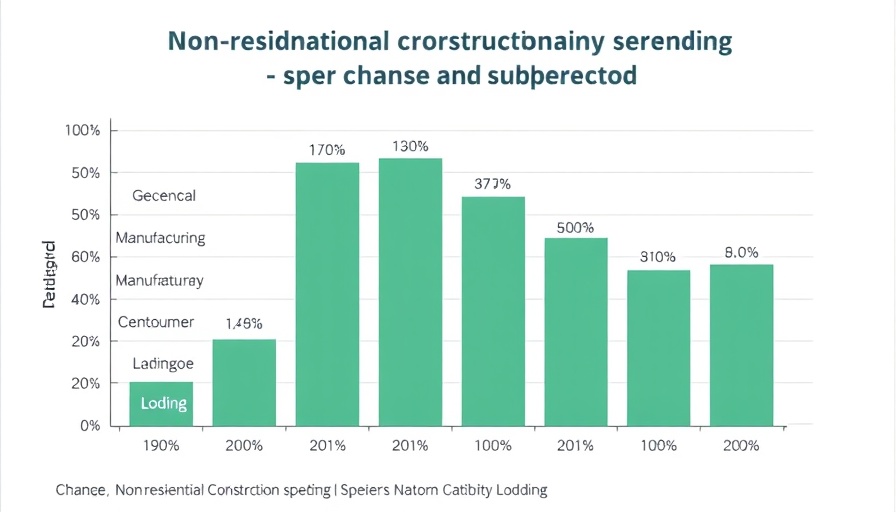
Is a Recession on the Horizon? Understanding the Risks
According to recent warnings from economists, including a notable assessment by ABC's lead economist, the current economic landscape is teetering on the brink of a possible recession. With inflation still high and consumer spending fluctuating, homeowners and contractors alike need to prepare for what could be challenging times ahead. Historically, economic downturns have direct implications not just on national economies but also on local markets, including the home service industry.
Why This Information Matters to Homeowners and Contractors
As a homeowner, you may be wondering how a recession might impact your ability to maintain or remodel your home. Similarly, if you're a contractor, understanding these economic indicators is crucial for forecasting demand for services. In times of economic uncertainty, homeowners often delay repairs and renovations, opting instead to save funds and only focus on essential services. This leads to a decrease in business for contractors. In essence, knowing when a recession is likely can help both homeowners and contractors strategically plan their budget and business operations.
Parallel Example: The 2008 Financial Crisis
To illustrate the impact of a recession, we can look back to the 2008 financial crisis, which had widespread ramifications. Many homeowners found themselves unable to pay their mortgages, leading to foreclosures and a significant drop in demand for home improvement services. Simultaneously, contractors were forced to pivot their business models, focusing on emergency repairs rather than renovations. This historical parallel underscores the importance of being proactive and prepared in the face of similar circumstances.
Future Predictions: What Economists Are Saying
Economists are predicting various outcomes depending on how market dynamics shift over the coming months. While some experts believe that the economy may rebound by stabilizing inflation rates and rekindling consumer confidence, others caution that without significant policy changes, the possibility of a prolonged downturn could arise. Homeowners should consider locking in current mortgage rates, while contractors could diversify services to include low-cost emergency repairs that can attract clients even during financial stress.
Risk Factors: Preparing for Potential Economic Challenges
There are several risk factors that homeowners and contractors should keep in mind as they navigate this uncertain landscape. High inflation rates and increasing interest rates can limit purchasing power, thus affecting spending on home renovations. Contractors may need to prepare for a decline in large project contracts and shift focus to essential maintenance and repair work which is less susceptible to economic fluctuations.
Actionable Tips: Strategizing in Uncertain Times
In light of the potential recession, both homeowners and contractors can take certain actions to mitigate risks:
- If you're a homeowner: Start prioritizing maintenance work over major renovations. Consider smaller upgrades that can enhance your living space without breaking the bank.
- If you're a contractor: Use this time to refine your skills and expand your knowledge of emergency repair services, which may see a rise in demand.
- Collaborate: For contractors, fostering strong relationships with clients and other industry professionals can provide a safety net and source of referrals during tough economic times.
Emotional Insights: How Uncertainty Affects Our Lives
The prospect of an economic downturn isn't just a matter of numbers; it can create significant anxiety for both homeowners and contractors. Homeowners may worry about maintaining their property’s value and ensuring safety in their living environment, while contractors might fear the loss of income and business stability. It’s essential to validate these feelings and seek support, whether through community engagement or professional networking. During tough times, collaboration can often lead to innovative solutions.
Final Thoughts: Preparing for Economic Downturns
In conclusion, understanding the warning signs of a potential recession from trusted economic forecasts is crucial for both homeowners and contractors. As uncertainty looms, taking proactive steps to prepare can create resiliency against economic fluctuations. For homeowners, being mindful of spending can help maintain their home's value, while contractors can focus on diversifying their business practices to align with changing consumer needs. Whether facing a current economic challenge or future uncertainties, being informed equips both parties with necessary tools to navigate potential hardships successfully.
As market conditions remain volatile, staying abreast of economic developments and their implications can make all the difference in long-term success. Don’t wait—create a strategy today to weather whatever challenges may come your way!
 Add Row
Add Row  Add
Add 




Write A Comment